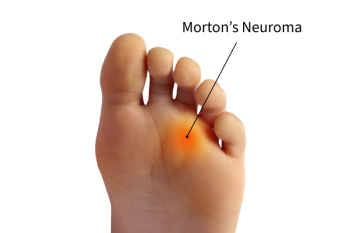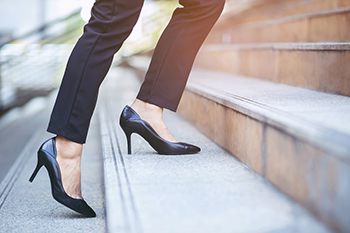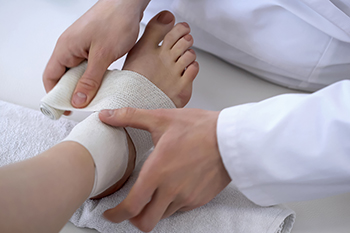
Morton's neuroma is a painful foot condition that results from the thickening of tissue around a nerve leading to the toes. This ailment commonly affects the area between the third and fourth toes, causing discomfort, burning sensations, or often the feeling of a small pebble inside the shoe. Individuals experiencing Morton's neuroma may notice pain that intensifies while walking or standing, often accompanied by numbness or tingling. As the condition progresses, sufferers might observe a change in the shape of their toes or find relief by massaging the affected area. Early detection is essential, as ignoring the signs may lead to increased pain and potential complications. If you suspect you have developed Morton's neuroma, it is suggested that you contact a podiatrist who can help you with successful treatment options.
Morton’s neuroma is a very uncomfortable condition to live with. If you think you have Morton’s neuroma, contact one of our podiatrists of Community Foot Specialists. Our doctors will attend to all of your foot care needs and answer any of your related questions.
Morton’s Neuroma
Morton's neuroma is a painful foot condition that commonly affects the areas between the second and third or third and fourth toe, although other areas of the foot are also susceptible. Morton’s neuroma is caused by an inflamed nerve in the foot that is being squeezed and aggravated by surrounding bones.
What Increases the Chances of Having Morton’s Neuroma?
- Ill-fitting high heels or shoes that add pressure to the toe or foot
- Jogging, running or any sport that involves constant impact to the foot
- Flat feet, bunions, and any other foot deformities
Morton’s neuroma is a very treatable condition. Orthotics and shoe inserts can often be used to alleviate the pain on the forefront of the feet. In more severe cases, corticosteroids can also be prescribed. In order to figure out the best treatment for your neuroma, it’s recommended to seek the care of a podiatrist who can diagnose your condition and provide different treatment options.
If you have any questions, please feel free to contact our offices located in Beavercreek, Dayton, and Vandalia, OH . We offer the newest diagnostic and treatment technologies for all your foot care needs.





